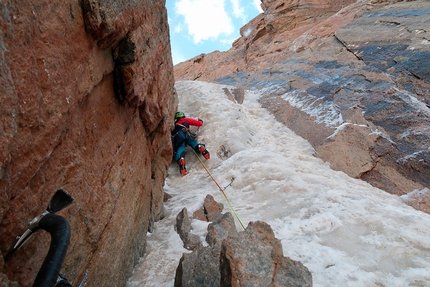Marva Peak in Peru climbed by Marek Radovský, Ďuri Švingál
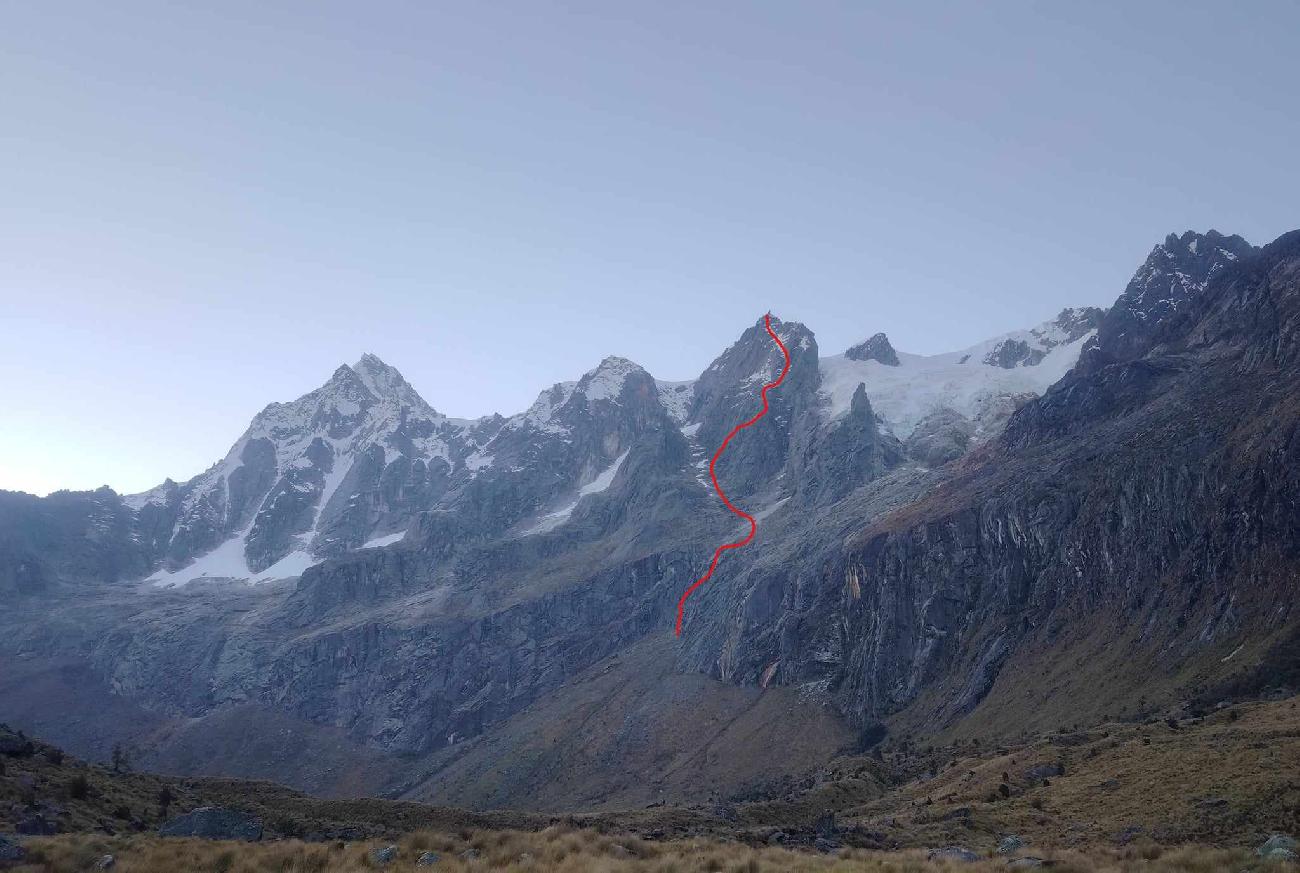
 1 / 19
1 / 19 Marek Radovský archive
Marek Radovský archive
The idea to visit Peru came to me and Ďuri Švingál back in 2022 during our previous expedition to Kyrgyzstan. We have been twice to the East, so this time we decided to visit the West. We flew out on July 18th 2023 from Budapest via Istanbul and Panama to the capital of Peru, Lima, where we travelled from for 10 hours to the city of Huaraz, located at an altitude of 3080 meters.
The mountain of Aguja (5840 m.a.s.l.) was our choice for acclimatization. It is situated above the beautiful Laguna Parón (4200 m.a.s.l.), what is a favorite destination of one day trips from Huaraz. We slept below the Aguja at 4800m.a.s.l. with an amazing view onto the Huandoy face. We went for a walk to the altitude of 5000m while looking at the face for some potential goals.
Finally, after careful consultation at the mountain guides office in Huaraz, we chose part of Santa Cruz track. From Huaraz via Yungay we continued to the pass of Portachuelo de Llanganuco to the altitude of 4700m. We reached the village of Vaquería at an altitude of 3725m, where we spent a night in the humble house of an old lady and 70-year-old Sanchéz who met us with donkeys next morning. We loaded two donkeys with 80kg of backpacks and set off into the valley. We ignored our original plan to climb Chacraraju (6001m) because of extremely bad conditions caused by high temperatures, and instead we kept going along the valley until we finally arrived at Tuctubamba. Located at an altitude of 4200m and below the Taulliraju massif (5830m), this is where we set up basecamp.
We enjoyed the mountains all around us and we chose precisely the line we had planned for and for which we had the right equipment. There were rocky parts at the bottom and snowy-icy mix upper sections of the route. We were quite disappointed by the rock, or by things which we found on the rock, namely moss. But there was a nice chimney 240m high which provided pleasant climbing up to 6a. After this rocky start to the climb, easier, third grade terrain followed until we chose a place to start climbing directly up towards the summit face.
Once again we followed a set of chimneys, cracks and corners. Right from the outset we realised our progression couldn’t be taken for granted. Ďuri’s toes froze in his climbing shoes and after four pleasant rock pitches we reached the first snowfield, where for two pitches crampons and ice axes replaced climbing shoes. We then put the ice tools aside once again and climbed one of the most beautiful pitches of the entire route which, at 6b, turned out to be the crux. From here we continued with two steep pitches filled with hard snow. Climbing to the belay before the last one was quite unpleasant, past M6+ with poor protection.
We had a feeling that the summit was not far off and we knew that final part would be without snow. So, I put aside my ice tools but kept one axe in my hand instead of a hammer. Then unfortunately I was faced by a rather unpleasant wall with a hand-jamming crack and bad footholds. Moreover, there was a loose rocky blocs the size of a “fridge and freezer”. But there was no choice, I had to put my feet on it. Fortunately everything went well, after which I completed the final pitch at 6b once again and then we enjoyed an amazing spectacle on the summit. The sun was setting as we reached the highest point and we observed the surrounding mountains tinted yellow and red. The sun set at 6 pm and a long rappel descent lay in store. Before having started our climb we had identified a section of the wall to rappel down and reach the couloir and then the glacier. We thought that it would be nice, but 14 rappels took us 6 hours and it was not pleasant in the slightest. We had run out of water a long time ago, fortunately though we had enough sweet snacks.
We returned to the bivouac below the face after 19 hours of entertaining climbing. We melted snow, cooked food and slept in our 500 grams ultra-light sleeping bags. In the morning we went down through dense vegetation to the basecamp and we were happy to cook normal food and give us a bit of comfort.
After two days of rest, we packed our rucksacks with a winter equipment only. We changed our light universal shoes by AKU with warm duplex shoes and ultralight aluminum crampons with stainless steel crampons. We removed the bivouac on the way up and marched below the second mountain with our 15kg rucksacks. Then we found a place for our tent, some water and went to sleep.
The alarm clock rang at 4 am, we had some potatoes with bacon from a sachet, cappuccino and left basecamp and headed below the face. We started climbing with the first rays at sunrise. Meanwhile July changed to August and as we learned, clouds and precipitation come in August, so the summit began to be shrouded in clouds. We “jumped” over crevasses and simul-climbed the first 300 meters. Ďuri established a first belay – one ice screw in a strange ice-snow formation and two ice axes. It was impossible to place our own protection in this kind of rock. I took the gear from him and climbed the next 60 meters of steep and hollow ice to where I hoped to find a good belay. Unfortunately, I didn’t succeed. While hammering a peg, a screw from an ice axe fell out, the the peg was not safe. I added a last ice screw and two ice axes and the belay was “completed”. Ďuri reached me at the belay and we decided to drill a bolt. But there was a big surprise in store: the drill was so weak and the battery ran out after drilling only half the hole. Probably, instead of charging the battery with the solar panels, they did quite the opposite. A sad story and, given the circumstances nothing else remained other than descend. It would not have been reasonable to continue with this poor quality rock and bad protection.
We were near the tent during a noon and a long descent to the basecamp was waiting for us. We called agency by satellite phone to send us Sanchéz with his donkeys following working day if possible. We were sad, disappointed and wanted to go down. An answer came after two days. Meanwhile, not to be bored, we decided to try a beautiful tower in the right side of the valley. We knew that approach to it would be very hard, high grass, stones, forest, rocky edge. One wouldn’t like to descent this terrain after dark. It was very nice rock wall at first sight, but very bad for protection. Maybe one-two protection placesper pitch. Cracks in this old rock are all completely closed. After four 60 meters pitches I drilled belay and it lasted infinitely. Ďuri led next beautiful pitch about 6b+, where he needed to clear enough a protection place by hammer. Quite nice gardening place. A wire brush would have been ideal, but we didn’t have any. He was drilling a belay place, but battery indicator showed that battery ran out and drill was overheated. Again, there was no choice than rappel down, nevertheless two – three pitches below the summit. We didn’t manage to drill the next belay while rappelling, but fortunately we placed a good peg.
The result of Peruvian faces vs us – 2:1. We don’t mind though, we achieved a beautiful first ascent on a mountain where nobody had set foot before us, and a dream we had dreamt about for a year had come true!



 Copia link
Copia link
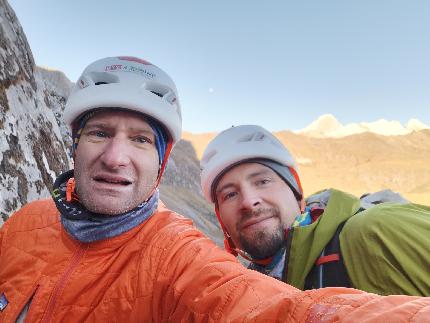
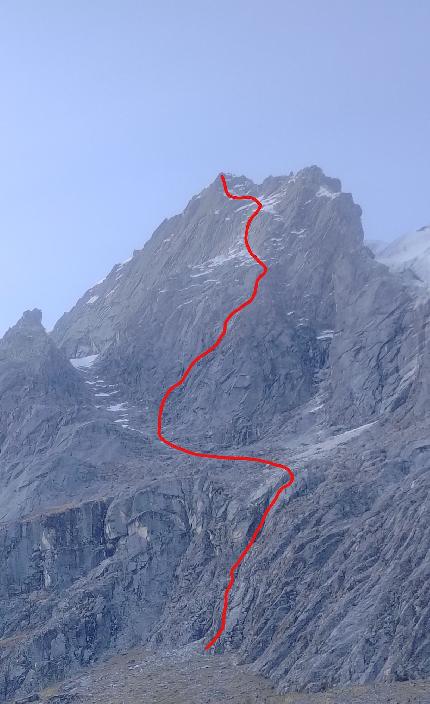
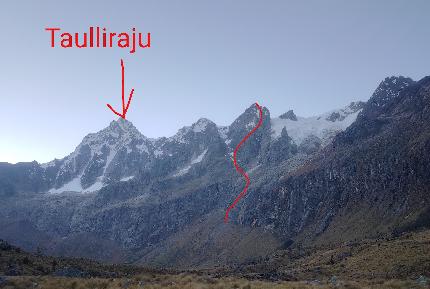
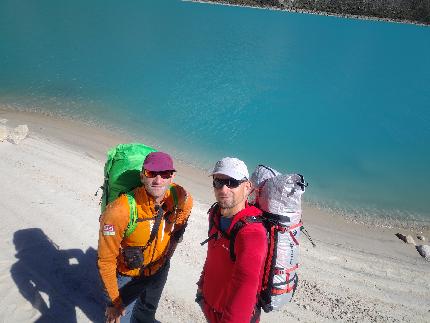
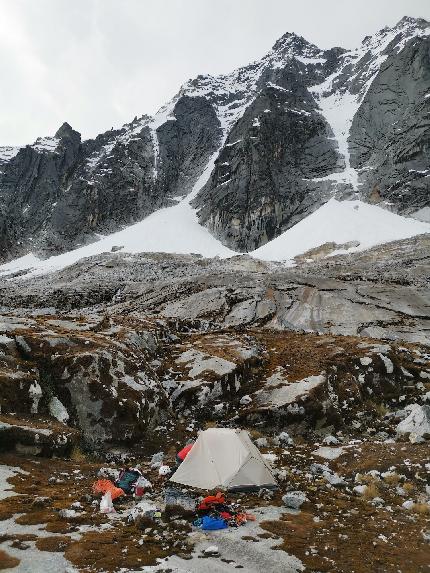
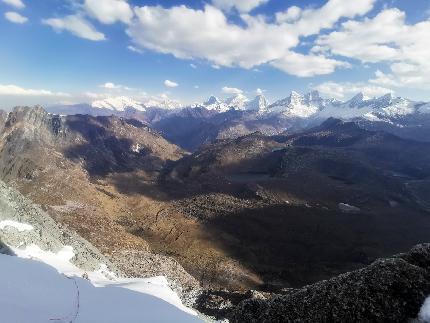
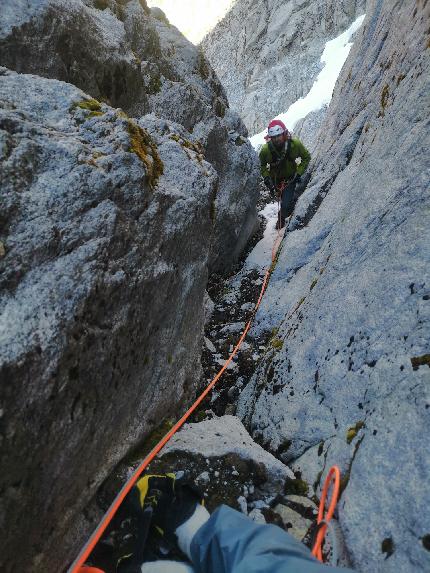
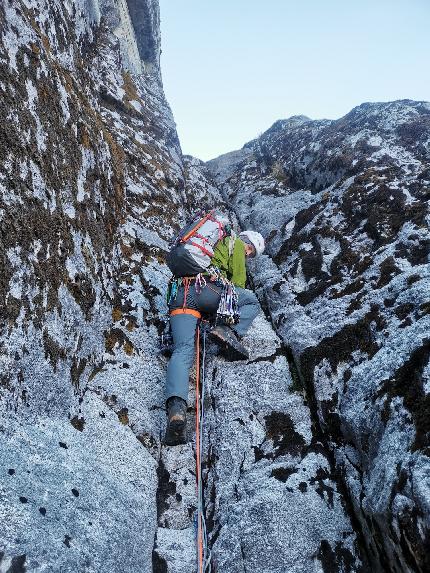
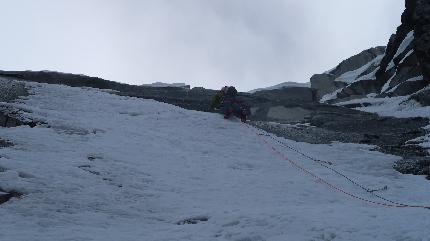
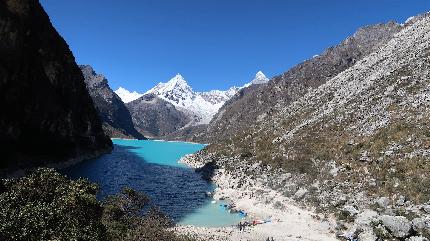
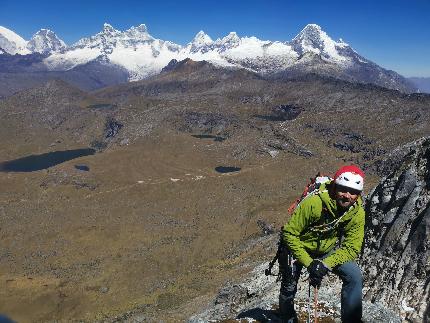
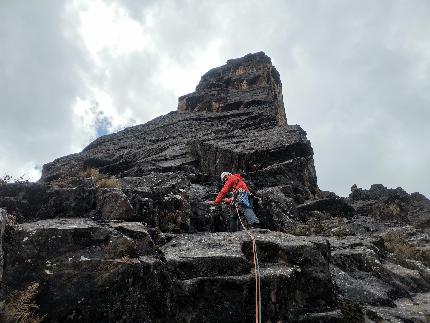
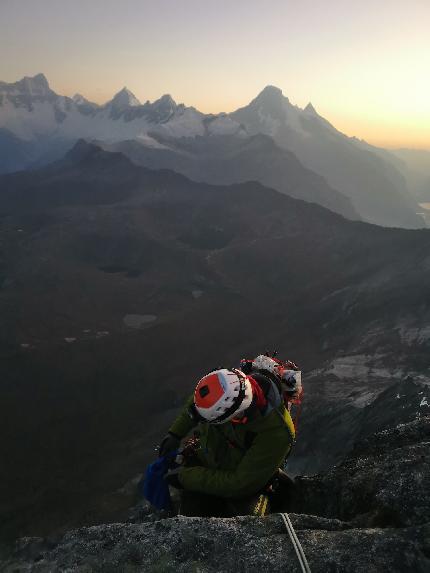
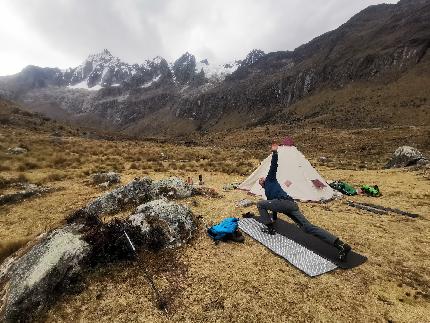
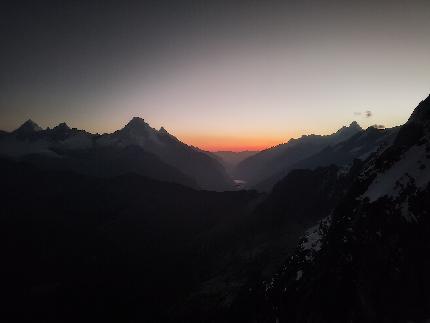
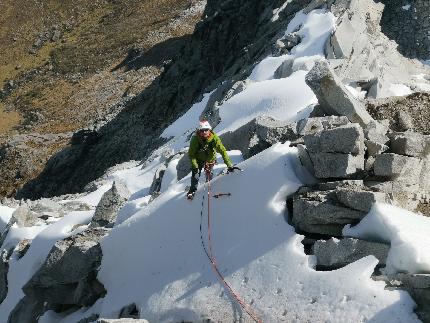
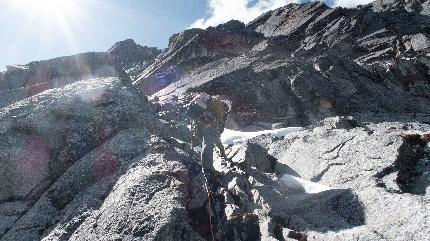
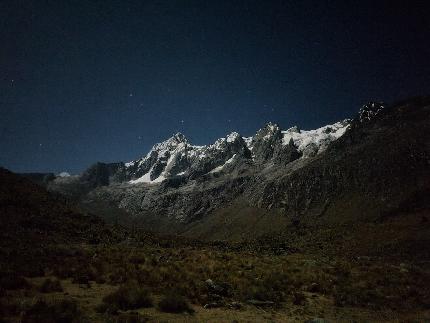
 See all photos
See all photos